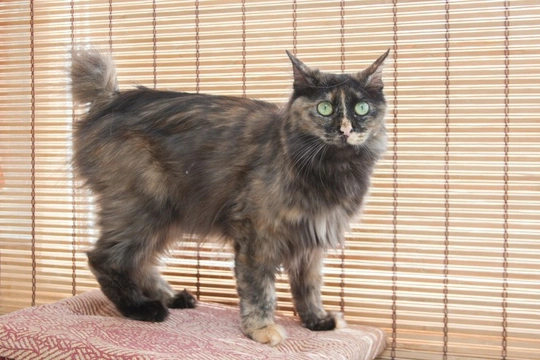
Kinked Short Tails in Cats
Bobtail cats are born with a mutation that sees their tails being either shortened, knotted, a pom-pom shape or they can be kinked. This mutation is not the same as that seen in the Manx cat and kittens with a wild bobcat and domestic cat parents can inherit the mutated gene responsible for the shape and size of their tails and whether they have kinked short tails.
Breeds Most Affected
There are some breeds that are more likely to be born with a kink in their tails than others with the Siamese and other pointed breeds being high on the list of cats that can have a little bit of a kink or curl in their tails. As such, not all kittens in a litter of cats that usually have bobtails are born with the mutation with some of them boasting normal tails that have a very distinct kink or curl in them. Other breeds that often have kinks in their tails include the following:
- Kurilean Bobtail - these cats often have longer tails with kinks or curves in them
- Burmese - like the Siamese, Burmese kittens are frequently born with a kink or curve in their tails
The Genetic Link
Studies have shown there is a genetic link which means that breeders often avoid using a cat with a kinked tail in their breeding programmes. However, it is worth noting that having a curve or kink in the tail is not a painful condition that can cause other health issues as a kitten matures into an adult cat. The reason many breeders choose not to use a cat with a kinked tail for breeding purposes is because these kittens are often perceived as not being pure bred"" and if a cat is to be used for showing purposes, judges would make a point of marking down an otherwise perfect example of a breed for this reason.
The problem is that the gene responsible for the mutation is known to be a recessive one. As such, even through careful and selective breeding, it is not always possible to guarantee that kittens would not be born with a kink in their tails even if both of their parents have normal ones.
Broken or Injured Tails
It is important to differentiate between cats that have been born with kinks or curls in their tails and those that have suffered some sort of injury to the tail which has caused the abnormality. A cat's tail may have been broken at some point in their lives, but cats often injure them through fighting with other cats which results in their tails being bitten which can often lead to an infection taking hold. A vet would typically prescribe a course of antibiotics to treat the infection and which would help reduce any inflammation that may result in further damage being done to the tail. It is essential that any course of antibiotics be completed for the treatment to be effective.
""



